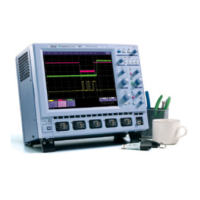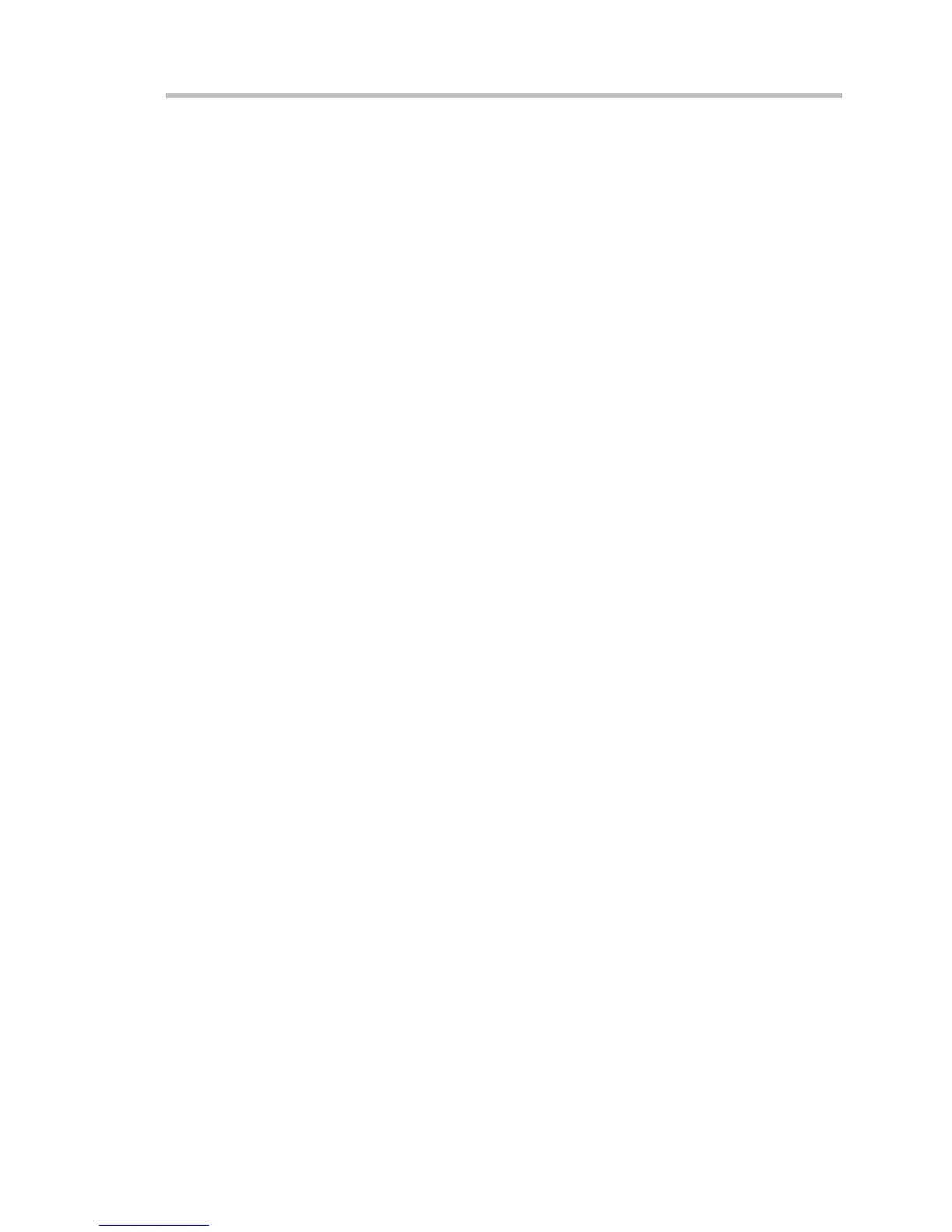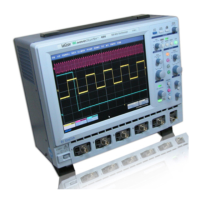WaveSurfer DSO
WS-OM-E Rev B 107
For a digital oscilloscope with a memory of 100 kB, the highest frequency that can be analyzed is:
Delta f x N/2 = 10 kHz x 100 kB/2 = 500 MHz
FFT Pitfalls to Avoid
Take care to ensure that signals are correctly acquired: improper waveform positioning within the
observation window produces a distorted spectrum. The most common distortions can be traced
to insufficient sampling, edge discontinuities, windowing or the "picket fence" effect.
Because the FFT acts like a bank of band-pass filters centered at multiples of the frequency
resolution, components that are not exact multiples of that frequency will fall within two
consecutive filters. This results in an attenuation of the true amplitude of these components.
Picket Fence and Scallop
The highest point in the spectrum can be 3.92 dB lower when the source frequency is halfway
between two discrete frequencies. This variation in spectrum magnitude is the picket fence effect.
The corresponding attenuation loss is referred to as scallop loss. LeCroy scopes automatically
correct for the scallop effect, ensuring that the magnitude of the spectra lines correspond to their
true values in the time domain.
If a signal contains a frequency component above Nyquist, the spectrum will be aliased, meaning
that the frequencies will be folded back and spurious. Spotting aliased frequencies is often
difficult, as the aliases may ride on top of real harmonics. A simple way of checking is to modify
the sample rate and observe whether the frequency distribution changes.
Leakage
FFT assumes that the signal contained within the time grid is replicated endlessly outside the
observation window. Therefore if the signal contains discontinuities at its edges, pseudo-
frequencies will appear in the spectral domain, distorting the real spectrum. When the start and
end phase of the signal differ, the signal frequency falls within two frequency cells, broadening the
spectrum.
The broadening of the base, stretching out in many neighboring bins, is termed leakage. Cures
for this are to ensure that an integral number of periods is contained within the display grid or that
no discontinuities appear at the edges. Another is to use a window function to smooth the edges
of the signal.
Choosing a Window
The choice of a spectral window is dictated by the signal’s characteristics. Weighting functions
control the filter response shape, and affect noise bandwidth as well as side lobe levels. Ideally,
the main lobe should be as narrow and flat as possible to effectively discriminate all spectral
components, while all side lobes should be infinitely attenuated. The window type defines the
bandwidth and shape of the equivalent filter to be used in the FFT processing.
In the same way as one would choose a particular camera lens for taking a picture, some
experimenting is generally necessary to determine which window is most suitable. However, the
following general guidelines should help.

